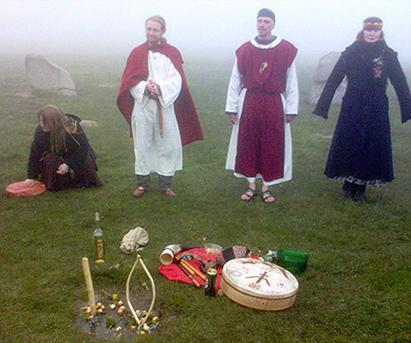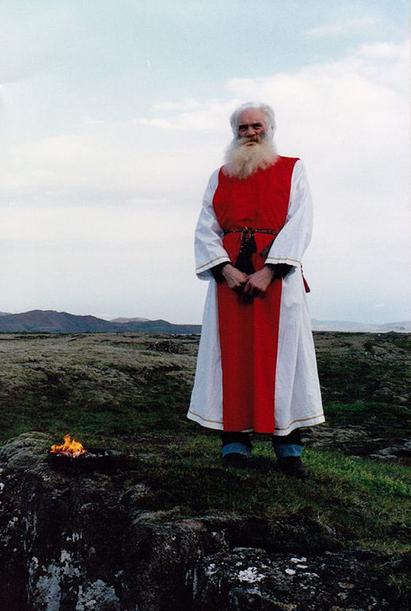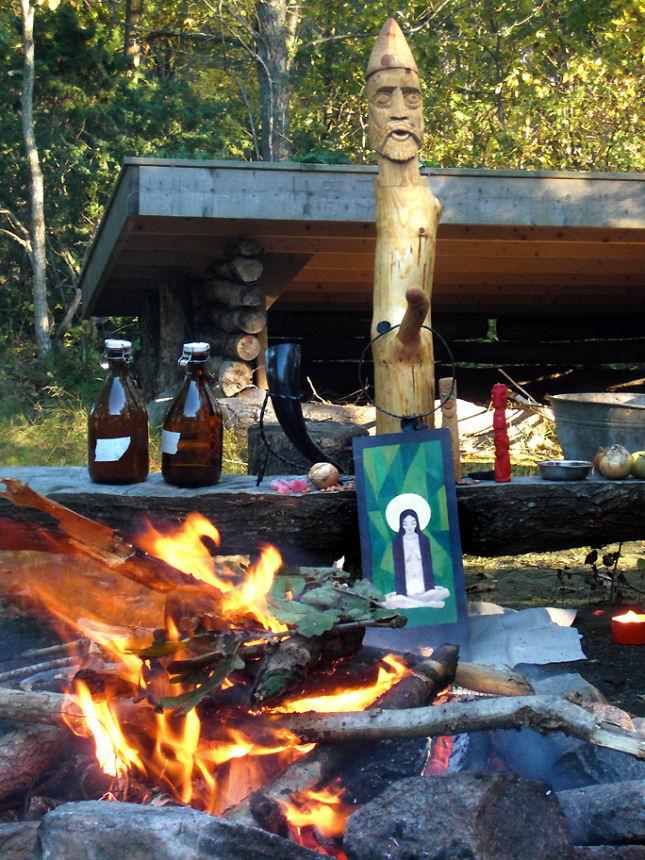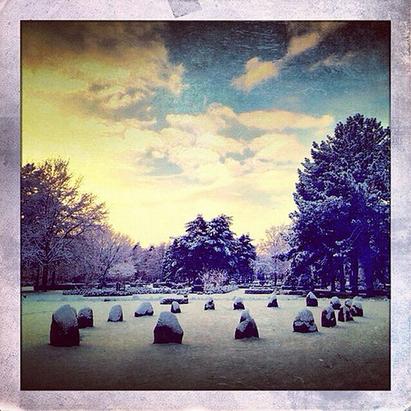The old Nordic religion (asatro) today
Thor and Odin are still going strong 1000 years after the Viking Age. Many think that the old Nordic religion - the belief in the Norse gods – disappeared with the introduction of Christianity. However, it did not, but was instead practised secretly or under a Christian cloak. Today there are between 500 and 1000 people in Denmark who believe in the old Nordic religion and worship its ancient gods.

Modern believers in the old Nordic religion meet in the open air just as the Vikings did. Here they praise the gods and make offerings to them. They honour the gods by drinking a toast to them and eating a feast. The toast may, for example, be to the fertility gods Njörd and Frej to wish for prosperity and a good harvest. Afterwards the modern believers make a personal toast. For example, young women can praise Freyja in order to become pregnant or find eternal love. If a challenge is faced, then Thor can be praised in order to gain strength or Odin can be invoked for wisdom.
The modern belief in the Norse gods is not a direct continuation of the beliefs of the Vikings. It is more of a revival and reinterpretation of the old religion, as there are so few written sources on the subject. These mostly consist of brief pieces written by Christian monks or short accounts in the sagas.
What is Asatro?

“Asatro” is the worship of the Norse gods. The religion does not only involve the gods, but also the worship of giants and ancestors. Asatro is a relatively modern term, which became popular in the 19th century. The Vikings did not have a name for their religion when they encountered Christianity. Therefore they called it “the old way” (Forn Sidr), as opposed to Christianity, which was the new way.
The largest Nordic religion society in Denmark is also called Forn Sidr. It was established in 1997, has around 600 members and is the only officially approved Nordic religion society in Denmark. This approval was granted in 2003. The believers are organised in groups located throughout Denmark. In addition, there are some believers who choose to practise individually.
Believers in the old Nordic religion can also be found in Sweden, Norway and Iceland. There are also a few groups in Great Britain and the USA.
A revival of ”the old way”

The believers in the old Nordic religion revive the Vikings’ beliefs from myths handed down via written sources, primarily the works of poetry known as the Elder and Younger Edda. As no overall interpretation of the written sources exists, the religion is practised so that it gives the best meaning to the individual.
To feel the power of their ancestors, the believers in the old Nordic religion go to pre-Christian cult sites, where they make offerings. The chosen location may be a Bronze Age burial mound or a Viking Age ship setting, for instance.
Those participating in the sacrifice are led by a “Gode” (male cult priest) or “Gydje” (female cult priest). Usually the participants form a ceremonial circle. This creates “a holy space” – a kind of portal to the world of the gods within the circle. The participants then pay homage to their gods until the circle is ceremonially opened again. Specific gods are invoked depending on the season and the theme of the sacrifice.
The offerings are carried out around four times a year – at the winter solstice, spring equinox, summer solstice and autumn equinox. The winter and summer solstice are respectively the shortest and longest day. At the spring and autumn equinox day and night are equally long.
Facts about Asatro

The way the Vikings divided up the year was closely connected to the activities of work and daily life. This division was based upon the sun’s yearly course and the various phases of the moon.
The Viking year began around 13 October. They marked the beginning of the winter half of the year with a large public harvest sacrifice and ended it with a corresponding victory sacrifice, when spring was beginning around 14 April – which marked the start of the war season. Between these two sacrifices the Vikings also celebrated the winter solstice around 21 December, the year’s shortest day. After this date the days gradually became lighter and warmer. As is the case today, the great festival of the winter half of the year was Christmas. The festival began in the middle of January and lasted for weeks.
The summer half of the year was used by the Vikings to gather supplies. Around 21 June, the summer solstice, the Vikings held their midsummer sacrifice celebrations, on the year’s longest day we know as Midsummer’s Eve. After this the year began to move toward darker times again. At the autumn equinox day and night were once again of equal length. Darkness had triumphed over light and the winter half of the year began once more.